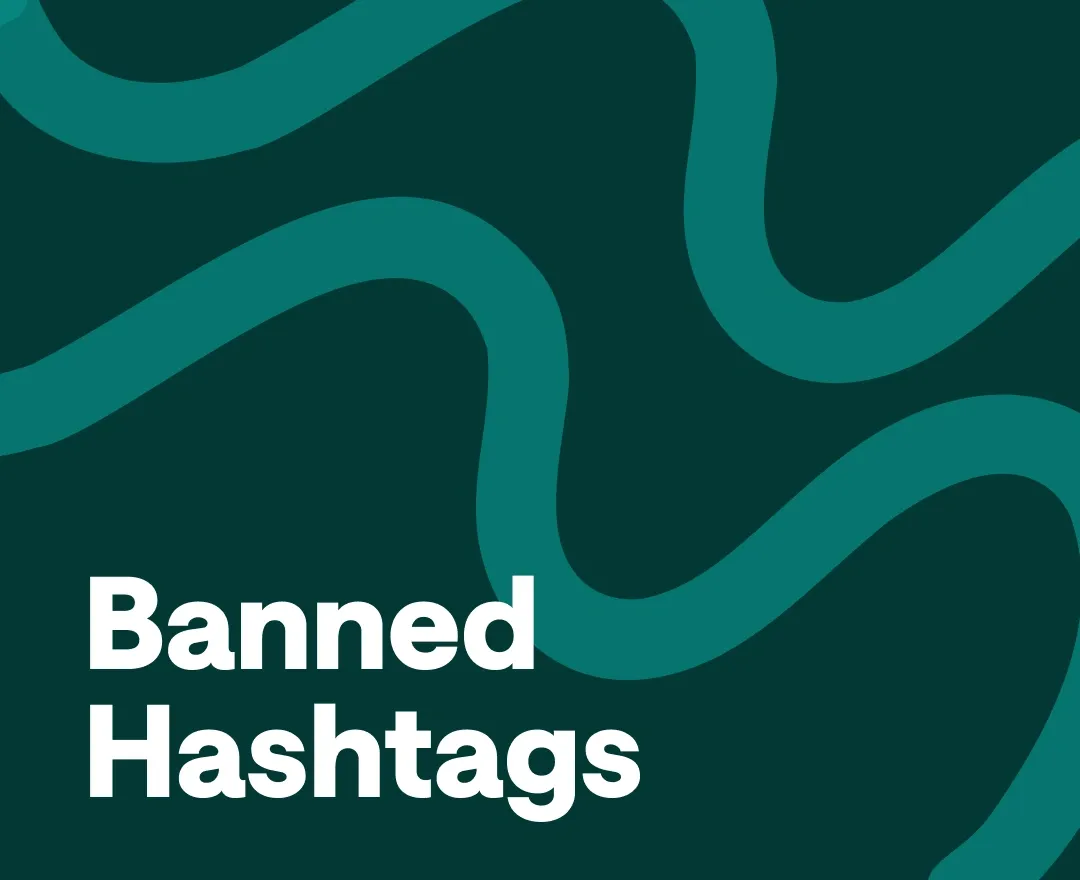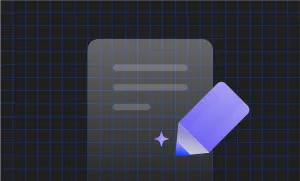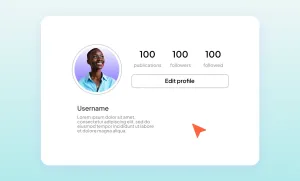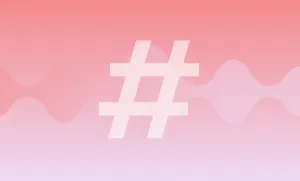Remember when everyone was using #ThrowbackThursday to post baby pics, awkward prom poses, or blurry vacation photos from 2012? It was the golden age of hashtags: kind of innocent, nostalgic, and mildly embarrassing. But times have changed. These days, using the wrong hashtag can make your content disappear faster than your old Myspace profile.
Welcome to the strange world of banned hashtags, where even harmless-looking tags like #beautyblogger or #elevator have found themselves in social media jail. It’s no longer a secret that accidentally using a restricted hashtag could mean fewer views, lower engagement, or, worst of all, no one seeing your post at all. But don’t worry, we’ve got your back (and your hashtags).
Table of Contents
– What are Banned Hashtags?
– How Have the Rules Tightened Over Time?
– Banned Hashtags vs Restricted Hashtags
– How Banned Hashtags Work on Instagram, TikTok, and YouTube
– Categories of Banned Hashtags
– Why Understanding Banned Hashtags Matters
– What Happens When You Use Banned Hashtags?
– How to Avoid Banned Hashtags: Tips for Creators
– Accidentally Used a Banned Hashtag? Don’t Panic
– Create Social Media Content with Podcastle
Listen to this article
What are Banned Hashtags?
In simple terms, banned hashtags are tags that social media platforms have restricted from being searchable, clickable, or visible in order to curb spam, misinformation, or inappropriate content. When a hashtag is banned, posts using it may not appear in searches or on the Explore or For You pages and in some cases, using too many banned hashtags could even shadowban (slow limitation of your content visibility, without you being notified about it) or limit your account.
How Have the Rules Tightened Over Time?
Originally, hashtags were the Wild West. Anyone could use any hashtag, for any reason. But as platforms matured and moderation tools evolved, hashtags became one of the easiest ways for platforms to detect and control rule-breaking content. If a tag was associated with a high volume of spam, harmful content, or policy violations, it would be restricted or banned. Today, AI-driven moderation tools on Instagram, TikTok, and YouTube can flag hashtags at scale, sometimes sweeping up innocent ones in the process.
Banned Hashtags vs Restricted Hashtags
Not all banned hashtags are created equal. Some are gone for good, while others are just… taking a break.
Permanently Banned Hashtags
These are the hashtags that got kicked out of the party forever. They've violated platform rules in a big way: promoting hate, harmful behavior, or being hijacked by spam bots beyond repair. You’ll usually know because when you search them, either nothing shows up, or you get a very clear "Posts hidden" warning. There’s no fixing these. No comeback tour. Best to say goodbye and never look back.
Temporarily Restricted Hashtags
Now these ones? They’re on probation. Temporarily restricted hashtags might’ve been part of a trend that got messy, overwhelmed by spam, or started surfacing sensitive content during a certain time (like misinformation during a major event or a challenge that went too far). Platforms quietly cool them off, limiting their visibility or disabling the hashtag page altogether, until things calm down. Sometimes they come back, sometimes they don’t.
How Banned Hashtags Work on Instagram, TikTok, and YouTube
Before your content ever lands in someone’s feed, it has to pass through invisible gates. Algorithms scan it, judge it, and quietly decide whether it deserves the spotlight or the shadows. Hashtags have now become tripwires. Use the wrong one and your post might vanish into digital silence before it even has a chance.
Each platform has its own personality when it comes to hashtag restrictions. Instagram has a long memory, TikTok moves fast and flags trends like wildfire, and YouTube, though quieter on the hashtag front is no less watchful.
Let’s break down how banned hashtags operate on each of these platforms, and why even one rogue tag can change the fate of your content.
Instagram Hashtags
Instagram has a long history of banning hashtags that violate community guidelines or get overrun by spam and bots. When you search a banned hashtag, you'll either see no results or a message saying the posts are hidden. Importantly, using a single banned hashtag on your post can suppress its reach entirely, even if the rest of your content is squeaky clean.
These bans typically fall into a few clear categories. Hashtags tied to hate speech, explicit language, or any form of harassment are immediate red flags. Instagram also takes action on tags connected to illegal activities, like drug use or unlawful gambling, and closely monitors hashtags that have been co-opted for spam or misinformation campaigns.
Surprisingly, even some health-related tags, especially those linked to eating disorders or harmful behaviours, may be restricted in an effort to protect vulnerable communities. And finally, Instagram keeps a close eye on misleading or manipulative tags, such as those used for fake engagement or to game the algorithm.
In short, if a hashtag has become a magnet for content that goes against Instagram’s community standards, there’s a good chance it’s already off-limits, even if it looks harmless at first glance.
Examples:
- #elevator (temporarily banned due to spam abuse)
- #beautyblogger (once banned due to inappropriate use)
- #instababe (flagged for violating adult content policies)
TikTok Hashtags
TikTok uses hashtags as a discovery engine. The platform tends to restrict or suppress hashtags associated with trends that violate its safety policies. Some hashtags are blocked temporarily if they’re associated with harmful challenges or misinformation.
Tags linked to self-harm, eating disorders, or other harmful behaviors are frequently banned in an effort to prioritize user safety. #SkinnyTok, for instance, was removed due to its association with unhealthy body image content.
Just like Instagram, TikTok also takes down hashtags that promote illegal activities, like drug use or violent behavior, or sexually explicit or exploitative content, particularly anything that could put minors at risk. And as with other platforms, hashtags used to spread spam or manipulate engagement, often by misleading viewers, are commonly restricted or quietly shadowed.
The result? Even if your content doesn’t break any rules, tagging it with a problematic hashtag could keep it from ever reaching the audience it deserves.
Examples:
- #suicide (banned to prevent the promotion of self-harm content)
- #followme (used to be a clickbait for spammy content)
- #winbig (restricted due to the propaganda of gambling content)
YouTube Hashtags
While YouTube doesn’t rely as heavily on hashtags, it does support them, especially for Shorts and search optimization. If a hashtag is associated with policy-violating content, the platform may de-rank or completely hide videos using it.
YouTube’s approach to hashtags centers around maintaining a safe, trustworthy space for its users. Hashtags that violate Community Guidelines, such as those promoting hate speech, harassment, or sexually explicit content, are typically removed or hidden from search results. Likewise, tags that are repeatedly abused by spammers or bots often get quietly banned to prevent manipulation of the platform. Quite similar to the cases of Instagram and TikTok.
YouTube doesn’t provide a public list of banned hashtags, nor it officially labels hashtags as banned, so creators have to be proactive, whether by using trusted research tools, checking tag activity manually, or sticking to relevant, meaningful hashtags. Also, keep in mind that over-tagging (using more than 60 hashtags) or adding irrelevant ones can lead to YouTube simply ignoring all of them, which defeats the purpose entirely.
Examples (keep in mind, that you can use these hashtags on YouTube as they are not explicitly banned, however, using them excessively for spammy or manipulative content, will lead to issues, so context matters):
- #likeforlike (often flagged as engagement bait)
- #fakenews (removed or shadowed due to misinformation policies)
- #followback (associated with spammy behavior)
Categories of Banned Hashtags
So what do banned hashtags tend to have in common? While each platform has its own moderation rules and quirks, most restricted hashtags fall into a few consistent categories. Here's a broader look at the types of hashtags to watch out for, no matter where you're posting.
1. Overly Generic Tags
Hashtags like #instagood or #photooftheday may seem harmless and they’re popular, right? But that’s exactly the problem. These tags are so widely used that they’ve become magnets for low-effort content and bot activity. Because they attract spam, platforms often throttle their visibility or temporarily block them altogether. Even tags like #popular, #snap, or #tagsforlikes can quietly tank your reach, not because your content is bad, but because you’ve lumped it in with a flood of algorithmically suspicious noise.
2. Spam-Heavy Hashtags
Some hashtags are synonymous with engagement bait. Those “follow me and I’ll follow back” loops that clog up comment sections. Platforms like Instagram and YouTube in particular target these because they often lead to artificial interactions, violating guidelines around authenticity. Tags such as #followme, #like4like, or #gainpost are commonly restricted or deprioritized for this reason. If you're serious about growth, these types of tags will do more harm than good.
3. Inappropriate or Sensitive Content
Unsurprisingly, hashtags tied to explicit material, violence, or conspiracy theories are frequently banned or hidden from public search. Think of tags like #nudity, #suicide, or #qanon, even mentioning them in a post can risk visibility or trigger content review. Platforms have a duty to protect users from harmful content, so they take a hard stance here, often removing or shadowing anything associated with these topics, regardless of the creator’s intent.
4. The Surprisingly Innocent Ones
Sometimes moderation casts a wider net than intended, and innocent hashtags get swept up. These bans can happen when a previously neutral hashtag becomes misused or associated with problematic trends. For example, #kansas was once restricted because of unrelated spam waves, and #elevator went dark after being hijacked by bot activity. These cases prove that even the most harmless-looking hashtags aren’t immune to moderation, and why it’s worth double-checking them before you post.
Why Understanding Banned Hashtags Matters
Think of hashtags as little keys to big doors - doors that open to new followers, wider reach, and meaningful engagement. But what if some of those keys are rusty, broken, or straight-up cursed? That’s where banned hashtags come in and why they deserve your attention.
Are you a full-time creator? A budding brand? Or just someone who loves sharing your world? Understanding how hashtags work (and misfire) is more than social media housekeeping; it’s mission-critical.
Here’s why knowing the banned ones can save your content from sinking:
- Protect Your Reach (and Sanity): One banned hashtag can quietly sabotage an otherwise brilliant post. You’ll be wondering why your content flopped, when the answer is hiding in plain sight, tucked into a little tag that no one’s seeing because the platform buried it.
- Maintain Your Account’s “Health Score”: Social platforms track behavior like hawks. Repeatedly using problematic hashtags can lower your account’s credibility over time. Think of it like getting dinged for bad driving: it adds up. And eventually, it can make the algorithm trust you less.
- Avoid Algorithmic Karma: The algorithm may not hold grudges, but it definitely takes notes. If your posts consistently trip moderation wires, even with the best intentions, you might start to notice less love in the explore tab, slower growth, or worse: the dreaded shadowban.
- Stay Ahead of the Curve: Platforms update their rules often, and some hashtags fall out of favour without warning. Staying in the loop helps you avoid digital landmines before they start affecting your performance.
What Happens When You Use Banned Hashtags?
Banned hashtags are like digital quicksand: you may not notice the danger at first, but once you're in, it’s hard to climb out. Whether you’re on Instagram, TikTok, or YouTube, slipping one into your post every now and then can quietly harm your content. Here’s what could happen:
- Shadowy Silencing (aka the Shadowban): Your content stays up, but becomes nearly invisible. Posts don’t show up in search, hashtags don’t work, and your audience might stop seeing your content altogether. It's like being in a conversation where everyone mysteriously stops replying.
- Crashing Engagement: Posts tagged with banned hashtags often get buried by the algorithm. That means fewer views, fewer likes, and a lot of “Why is no one seeing this?” moments.
- Platform Time-Outs: Repeated offenses can flag your account for restricted reach, especially if you rely on the same spammy or sensitive hashtags. The algorithm notices patterns, and it doesn’t like rule-breakers.
- Account Warnings or Suspension: In extreme cases, using banned or policy-violating hashtags repeatedly can lead to warnings, temporary locks, or even permanent bans from the platform. It's rare but not impossible.
What it all comes down to is this: one bad hashtag won’t ruin your account but make it a habit, and the algorithm might just show you the door.
How to Avoid Banned Hashtags: Tips for Creators
Avoiding banned hashtags is about protecting your reach, staying visible, and building trust with the platforms you rely on. Here’s how to stay in the algorithm’s good books while keeping your content discoverable and relevant:
1. Do a Quick Hashtag Search Before Posting
Type your hashtag into the platform’s search bar. If the results page is blank, limited, or shows a content restriction message, that’s a red flag. Skip it, it’s not worth the risk.
2. Use Hashtag Research Tools
Tools like Flick, RiteTag, and IQ Hashtags can help you monitor the performance, popularity, and ban status of hashtags. These platforms often flag tags that have dropped in visibility or are associated with spam.
3. Diversify Your Hashtag Strategy
Using the same set of hashtags repeatedly can trigger spam filters. Mix things up by rotating between groups of hashtags, and combine broad, niche, branded, and community-specific tags.
4. Prioritize Relevance Over Popularity
Just because a hashtag is trending doesn’t mean it’s safe or smart to use. Focus on tags that are authentic to your content and meaningful to your audience. Niche tags might bring fewer impressions, but they usually deliver higher-quality engagement.
5. Keep Your Hashtag Bank Fresh
Hashtags age. What worked last year, or even last month, could be restricted today. Do a routine audit of your go-to hashtags to ensure none have quietly fallen out of favour with platform moderators.
6. Understand and Follow Platform Guidelines
Familiarize yourself with each platform’s Community Guidelines and hashtag policies. These documents explain what types of content are considered harmful, misleading, or inappropriate and by extension, what kinds of hashtags are risky.
7. Monitor Hashtag Context, Not Just the Tag Itself
Even if a hashtag isn’t banned outright, how you use it matters. A hashtag used in a misleading, spammy, or policy-violating context can still result in reduced reach or content takedowns.
8. Stay Aware of Trends (and Their Consequences)
Be cautious when jumping on trending hashtags. Some might be tied to challenges, events, or memes that were later flagged or restricted due to misinformation, abuse, or dangerous behavior.
9. Recognize That Policies Change
Platform rules are dynamic. A hashtag that’s safe today might be banned tomorrow. Stay updated by checking creator resources, community updates, or using tools that track moderation shifts over time.
Accidentally Used a Banned Hashtag? Don’t Panic
We’ve all been there - hastily posting content, riding a trend, or copy-pasting your trusted set of hashtags, only to realize later that one of them is… banned. Yikes. It might feel like the algorithm is lurking, ready to pounce, but the good news is: this isn’t the end of the world.
Most social platforms understand that creators make honest mistakes. They're much more concerned with consistent misuse than a single misstep. That said, knowing how to react can help you bounce back quickly and protect your future content. Here’s what to do if you’ve accidentally stepped into banned hashtag territory:
- Take a Breath, It’s Probably Fine: One-time use of a banned hashtag usually doesn’t result in harsh penalties. Algorithms look for patterns of abuse, not isolated blips. Unless your entire account is built around spammy practices, you're likely in the clear.
- Edit the Post If You Can: On platforms like YouTube, Instagram or TikTok, you can often go back and edit your caption. Remove the banned hashtag as soon as you notice it. It won’t fully restore the post’s reach, but it’s a solid cleanup move.
- Audit Your Hashtag Bank: If you use the same set of hashtags for every post, it’s time to check those bundles. Copy-paste culture is convenient but it also makes it easy to spread outdated or banned tags without knowing.
- Monitor Performance: Keep an eye on your analytics. If you see a sudden, unexplained dip in reach or engagement after using a specific hashtag, it might be the culprit. Remove it from future posts and see if your numbers bounce back.
- Don’t Let One Mistake Shake Your Strategy: One post underperforms? That happens. Learn from it and move on. What matters most is that you’re paying attention, staying informed, and making adjustments as needed.
Create Social Media Content with Podcastle
Navigating the world of banned hashtags is part of the modern creator’s toolkit. From offensive and misleading hashtags to those caught in unexpected moderation sweeps, one wrong tag can quietly undo your hard work. But with a little research, strategic tagging, and a healthy dose of common sense, you can stay on the right side of the algorithm.
But mastering hashtags is only part of the story. To really stand out on social media, your content itself needs to shine and that’s where Podcastle comes in.
With Podcastle’s all-in-one AI-powered video editor, you can improve your content creation workflow from start to finish. Long-form YouTube videos, slick marketing clips, or repurposing content into scroll-stopping Reels and Shorts, Podcastle gives you everything you need to create polished, professional-grade video; all in your browser.
- Record in stunning 4K
- Enhance with AI tools like Magic Dust and AI Video Enhancer
- Create content with automated customizable captions and social-ready exports
Skip the clunky software and simplify your editing process so you can focus on what matters: telling better stories, growing your brand, and making content that connects.
Start creating with Podcastle’s AI-powered video editor today, and make every post count, hashtags and all.








